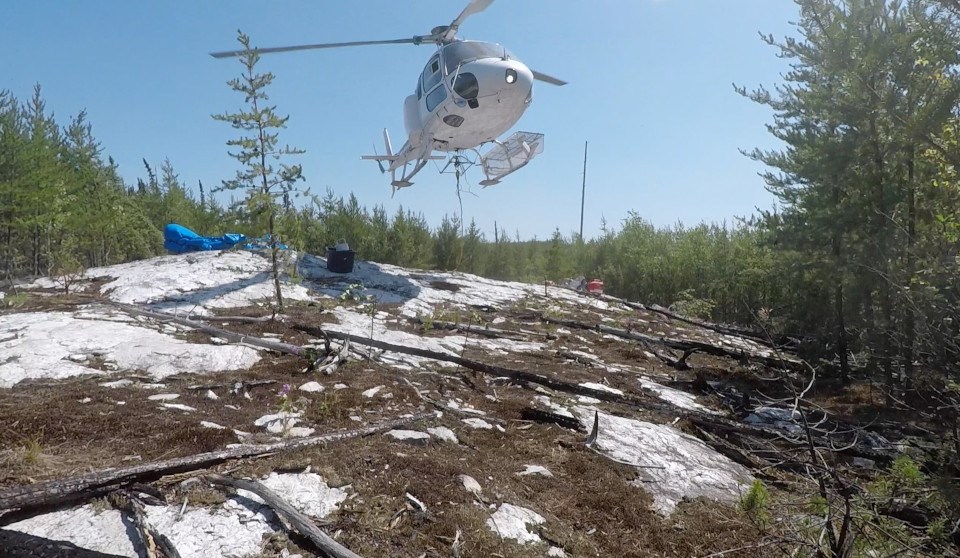A Sudbury lithium hunter with a two large, rich deposits in northwestern Ontario thinks it has the chops to be a major supplier to the North American battery market.
Frontier Lithium has launched a preliminary economic assessment (PEA) of a mine and processor for its PAK Lithium Project, north of Red Lake, to examine becoming a "vertically integrated" producer of lithium hydroxide chemicals, the company said in a Sept.9 news release.
Since 2013, the company has outlined two spodumene-bearing lithium deposits, two kilometres apart, that outcrop at surface. Frontier said it's amenable to low-cost, open-pit mining.
Lithium hydroxide is used in batteries for electric vehicles and cell phones.
The company said its Pakeagama Lake Pegamatite (PAK) Project, 175 kilometres north of Red Lake, contains a large tonnage, highly pure, technical grade resource capable of producing a premium spodumene concentrate.
Spodumene is the most widely used lithium, mined because of its high lithium content.
The company said the PEA study will be a stepping stone toward introducing Frontier as a future fully-integrated, lithium hydroxide supplier to the emerging electric vehicle and lithium battery market.
Most of the world's biggest lithium producers are Australia, China, Argentina and Chile.
Handling the PEA is engineering firm WSP Canada and Glencore's XPS Expert Process Solutions.
Frontier has been working with Glencore XPS in Sudbury to develop a refining process to create lithium hydroxide for North American battery manufacturers. The PEA study will be out by year's end.
Want to read more stories about business in the North? Subscribe to our newsletter.
The entire PAK project covers a claims area of more than 26,774 hectares near the Manitoba border that contain lithium-bearing pegmatites, the typical host rock for finding lithium.
An earlier prefeasibility study for the project revealed an 11.5-year mine life as an open pit with the potential to extend it below ground for another 4.5 years.
The PAK deposit contains a proven and probable mineral reserve of 5.77 million tonnes with an average grade of 2.06 lithium oxide. The Spark deposit, discovered early last year, contains an indicated resource of 3.25 million tonnes, grading at 1.59 per cent.
The company said the project has significant exploration upside.
Last spring, the Northwestern Ontario Prospectors Association handed Frontier its Bernie Schnieders Award for Discovery of the Year.
In the release, Frontier president-CEO Trevor Walker said the increase in the resource size, the property's strong metal content, and the encouraging lab results from chemical test work should produce a favourable outcome in the PEA study.
"The PEA will include a vertically integrated spodumene mining, milling and downstream lithium hydroxide production facility," he stated.
"The decision to pursue the vertically integrated model is being driven by strong lithium demand outlook, growing need for higher quality battery raw materials and very encouraging hydrometallurgical progress with ongoing evaluation test work.
"The PEA will build on the foundation set by our rare ability to produce high quality technical grade spodumene concentrate and will highlight the potential of a vertically integrated operation in the Great Lakes region of Northern Ontario."
Lithium prices remain in a prolonged but analysts believe the silver-white metal will take off in double or triple in value over the next decade due to an anticipated supply crunch with the consumer shift to electrical vehicles.




